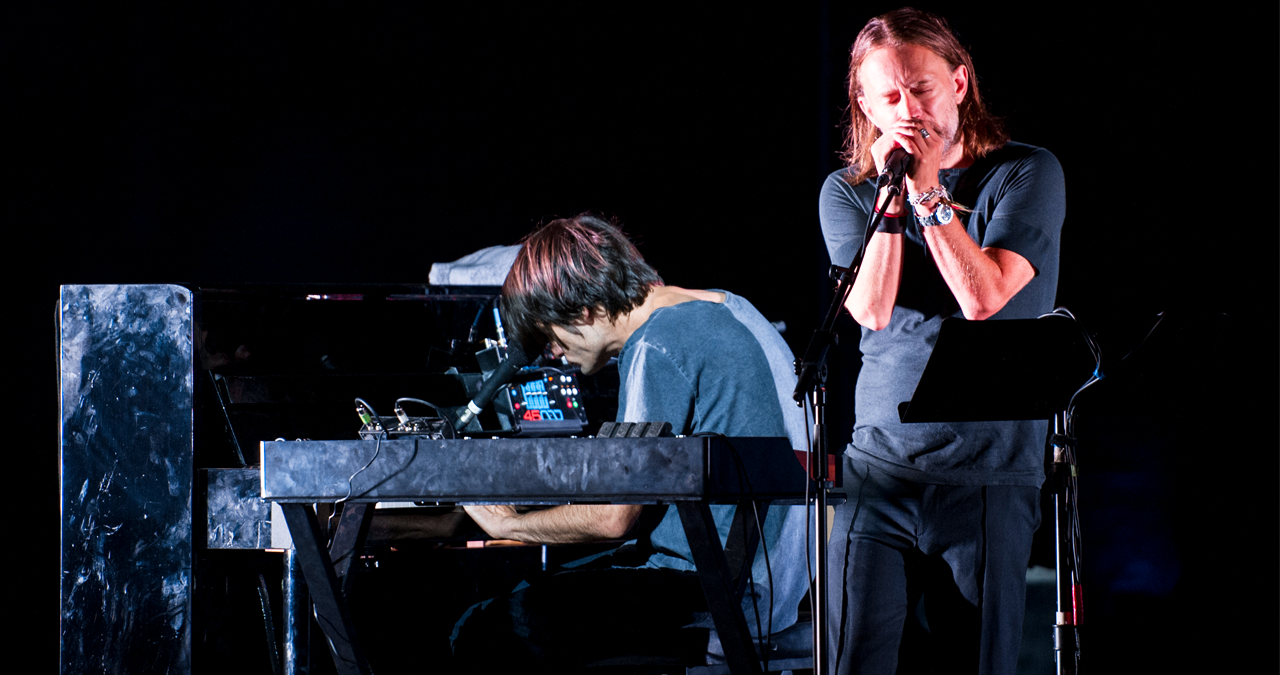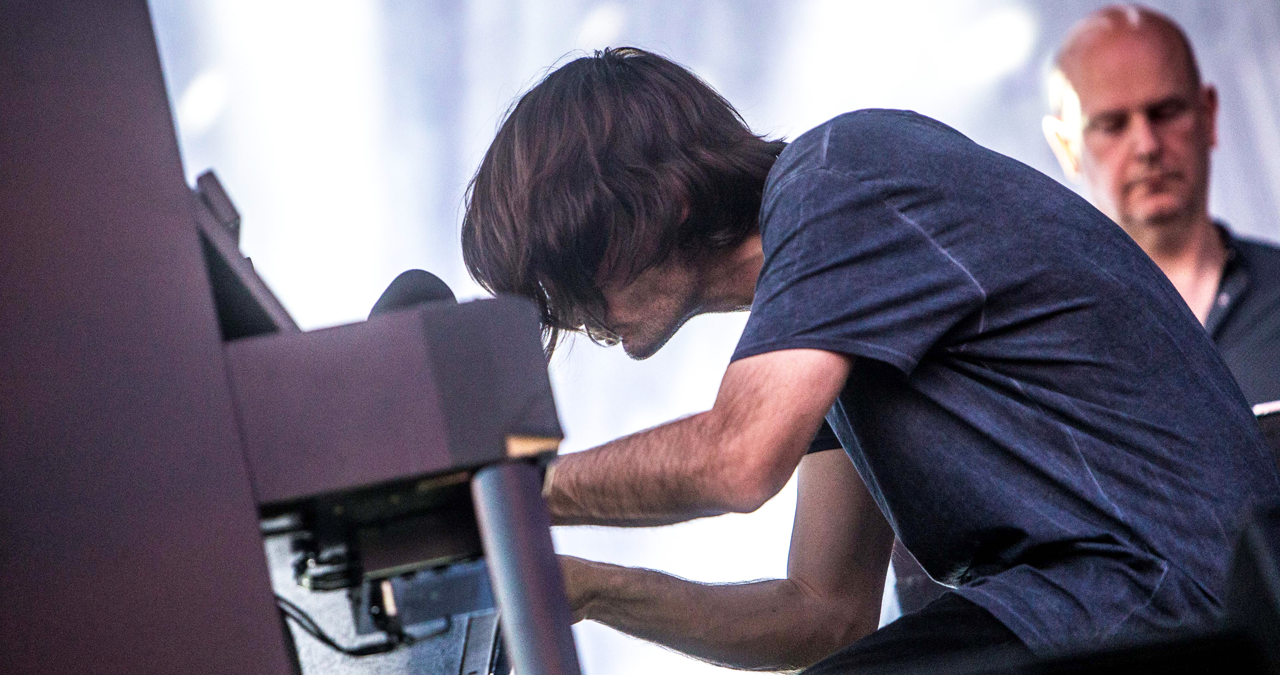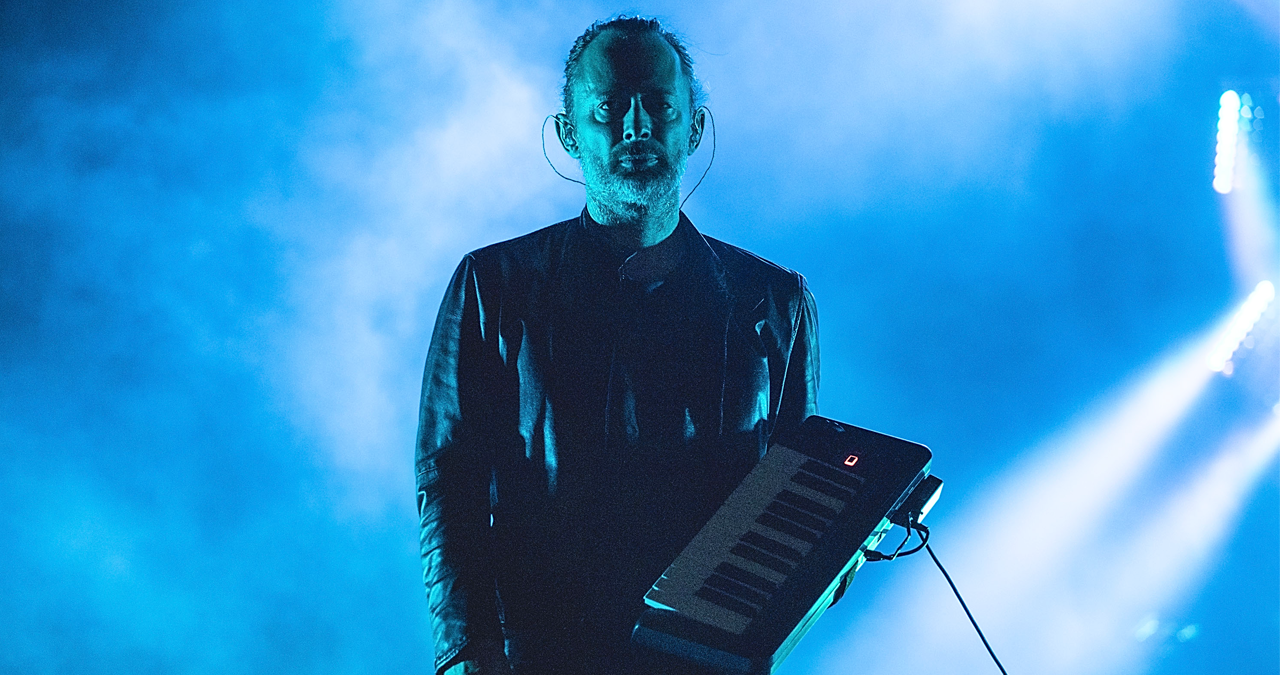“I don’t want to talk about it anymore, if that’s all right. I feel like the dust hasn’t settled”: The devastating personal pain behind one of Radiohead’s most affecting songs
The melancholy masterpiece was a highlight of the group’s last album to date, and was accompanied by a surreal Paul Thomas Anderson-directed video

Instantly hailed as a Radiohead classic from the moment of its release, the melancholy beauty of Daydreaming is inarguably one of the high watermarks of Radiohead’s entire songbook. As with much of its parent album, Daydreaming's crushing sadness was channelled from very real - and very painful - events in the lives of its makers.
Released as a download on May 6th 2016 ahead of the launch of Radiohead’s ninth studio album, A Moon Shaped Pool which came just two days later, Daydreaming's lyrics are a still-beguiling enigma.
In the near-decade since its release, it has undoubtedly been the most heavily analysed and discussed song from the period.
Feeling both intimate and bafflingly cryptic all at one, fans have long sought to unpick its mysteries and find a concrete meaning behind the complex emotions that the track elicits
The Moon Shaped Pool sessions first began back in 2014 at Radiohead’s own Oxfordshire studio, before moving to La Fabrique Studios in Saint-Rémy-de-Provence, France.
By all accounts, agreeing on just what the record would be, following 2011's more outré King of Limbs, was a head-scratching affair.
Helmed by the band's long-time production guru Nigel Godrich, the music that would become Daydreaming resulted in the crucially-needed breakthrough that would reveal the path forward.
Up until that point, the sessions had largely focused on developing tracks that had existed for many years prior. These included the string-driven Burn the Witch which originated in 2005, the relentless motorik drive of Ful Stop which was brewed during the King of Limbs sessions, and the remorseful True Love Waits; a song which had been in the band’s live rotation since as far back as 1995!
Daydreaming marked a departure from the typical Radiohead workflow, as chief songwriter and creative linchpin Thom Yorke, developed the vocal melody atop a new musical framework presented to him by the band.
The foundations of the piece, first dubbed ‘Daydreamers’, originated as a bit of in-studio piano and voice improvisation between Greenwood and Yorke.
Want all the hottest music and gear news, reviews, deals, features and more, direct to your inbox? Sign up here.

Suspecting the delicate musical pattern they'd landed on had promise, Jonny and Radiohead’s other guitarist, Ed O’Brien and his brother, bassist Colin Greenwood, worked up the demo without Yorke.
“We couldn't find a way in, and so we did the bare bones of it without him,” Jonny Greenwood told NPR. “[Thom] just came and sang. I mean he wrote the song, but I ended up playing the piano part and we presented him with this backing track to sing to, and I think that was kind of a nice change for him. He's so used to having to start things off.”
Upon penning his lyrics and tracking his vocal, the record A Moon Shaped Pool could be suddenly crystallised for Yorke.
“[Writing Daydreaming] was the equivalent of when we did Everything in its Right Place (The opening track of 2000’s Kid A) Yorke told Q magazine. "We got that and then we were, 'Right, OK, this is it.'"
Daydreaming's arrangement centred around Greenwood's hypnotic piano part, presumably played on the same Kemble KC121 upright piano that he'd later use on the resulting tour to perform it live. Its circular, repetitive arpeggio gradually drifted across a downcast chord sequence, played in 3/4 (or 12/8, depending on where you feel the beat within its drum-less arrangement.)
Greenwood’s pattern began by establishing the song's A minor key, which then gently shifted between different chordal flavours.
On the piano, these chords equate to Asus4, F6/9, Csus2/E and then a return to F6/9, whilst the second part of the verse pattern pivots unexpectedly up to Badd2/D and G7 sus4/Gsus4 which drags the piece back to the starting point.
As these overarching chords dipped into various hues, Greenwood maintained (and adjusted) the steady three-note motif. As the song progressed, a higher-octave version of the riff manifested in the mix, swimming in an aural soup that also featured swirling synth drones, ghostly backwards-playing vocal samples and some swooping - and often abrasive - strings.
The song's twice-repeated mid-section turned on its heel from the repetitive malaise of the verse and pushed the mood upwards. The section was led by an ornate, faster-played arpeggio section wherein Greenwood darted through Dmaj7/A, FMaj7/A, Bm7/a, BbMaj7 and Fmaj7.
This galloping arpeggio unshackled the song from the hazy verse part, while Colin's throbbing electric bass underpinned the emotion. It’s during this section that anguished backwards vocals from Thom overtly gnawed their way through the mix, and continue to haunt the developing arrangement.

Though affecting in its own right, this near-cinematic musical backdrop chimed with Yorke's innermost feelings. Tuning into the floaty lull of the piece, Thom was stirred to pen a lyric that referenced the naivety of ‘dreamers’ who, inevitably, end up in pain.
Dreamers
They never learn
They never learn
Beyond the point
Of no return
Of no return
Then it's too late
The damage is done
The damage is done
Yorke’s mortality-musing second verse depicted a ‘white room, by a window, where the sun comes through’ that lay ‘beyond me’ and ‘beyond you’. It suggested an escape into an alternative reality both calming and devoid of danger.
In order to unpack the song, and Yorke's headspace at the time, it's important to consider the surrounding (and somber) context.
During the making of the record, Yorke and his wife of 23 years, Rachel Owen, divorced. Shortly after, Owen was diagnosed with cancer. She’d sadly pass away just a few months after the release of A Moon Shaped Pool, on the 18th December 2016.
Devastating on numerous fronts, Yorke has remained understandably quiet about this period of his life, but explained to BBC's Desert Island Discs how he worked to support their two children in dealing with this loss. “When the kids’ mum died, it was a very difficult period and we went through a lot," said Thom. "It was very hard. She suffered a great deal and my ambition is to make sure that we have come out of it all right, and I hope that’s what’s happening."
Although Thom has never directly spoken to just how much this Radiohead record was informed by his split from Owen, the prevailing mood of sorrow-laden reflection is tangible across many of the songs of this period, Daydreaming certainly being chief amongst them.
"There was a lot of difficult stuff going on at the time, and it was a tough time for us as people. It was a miracle that that record got made at all,” Yorke recollected to Rolling Stone.

Buried within the mix of Daydreaming's outro lay perhaps one of the most direct allusions to this dark period. During which, Yorke intriguingly repeated the words ‘half of my life’ and ‘half of my love’ - albeit played backwards.
For some, this served as firm evidence that Daydreaming was, at least in part, a song that ruminated on Yorke's marriage breakdown. The reasoning, was that his 23-year long relationship with Owen was exactly half of the then-47 year-old Thom’s life.
Beyond Thom’s personal turmoil, there were further difficulties surrounding the band, that were ultimately channeled into the album. Its producer (and, important to stress, hands-on creative) Nigel Godrich’s father passed away during the production process.
The band's struggles to find a solid foothold, led them to reject a great many of Ed O’Brien’s ideas (that would ultimately be taken as the basis for his first solo record, Earth), By all accounts, the sessions were a dispiriting time for all.
“We weren't in a position to really talk about A Moon Shaped Pool when it came out,” Ed O’Brien relayed to Rolling Stone. “We didn't want to talk about it being quite hard to make. We were quite fragile, and we needed to find our feet. I don’t want to talk about it anymore, if that’s all right. I feel like the dust hasn’t settled. It was a hard time.”
Beyond Daydreaming's integral piano part, another astounding musical dimension of the song is the particularly eccentric string section, which unnaturally swoops, growls and tears at the arrangement. Handling these novel interjections were the innovative London Contemporary Orchestra, who were well accustomed to unorthodox performance techniques.

“Usually the strings are the icing on top. And this time it was there from the start to be more of a feature for what strings can do,” Greenwood told Crack Magazine of the recording sessions at London’s RAK Studios with the LCO.
“At the end of Daydreaming I got the cellos to all tune their bottom strings down about a fifth. But then still try to play the music. So you can hear them struggling to stay in tune and you have the low growl sound. That’s the kind of music they play anyway, and just all felt really effortless and exciting.”
Greenwood was also behind the tape-warped intro and otherworldly sounds that are smeared across the mix. Experimenting with pitch-warping was the result of spending more time with the analog tape machines that producer Nigel Godrich had insisted the band use to record A Moon Shaped Pool; a purposeful rejection of the limitless options that recording with modern digital tech presented.
As Colin Greenwood recounted to Bass Magazine, “We recorded everything [on A Moon Shaped Pool] to tape and multi-track. At the time [Nigel] was really into the 8-track recordings of Motown and early David Bowie albums, and he wanted to replicate that. It forces you to have to make decisions in the moment; it’s very much the opposite of having your album stored on a terabyte hard drive.”
When released as a download-only single ahead of the record, Daydreaming came bound up with a Paul Thomas Anderson-directed video that served to deepen Daydreaming's mysteries - and emphasised the loneliness of its singer.
In the video, Thom walked through numerous doors, entering a diverse array of locations that included a hospital, a hotel, various houses, a grocery store and even a beach. Most of the people encountered seemingly ignored the diminutive Yorke wandering through their homes or workplaces.
Seemingly pursuing the next, or the 'right' door, Thom ultimately ended up completely alone on a snow-covered mountain, before entering a cave and laying down next to a fire, mouthing the backwards, tape-warped lyrics during the song’s conclusion.
The first full collaboration between Paul Thomas Anderson and the band (after a near decade-long working relationship with Jonny Greenwood), the video stoked much discussion, and its dream-state tangle of interconnected environments underscored that this was a song operating on a subconscious level.
It was a journey that Thom could only undertake alone.
Debate as to the meaning of this labyrinth of situations was, as expected, intense. Did the video reflect a backwards journey through Yorke’s life, via an Eternal Sunshine of the Spotless Mind-recalling quest through the locales of his memory? Or, did Yorke's pilgrimage reflect a search for connection within an uncaring, unresponsive world?
Or was it, as many people read, a visual rumination on the breakdown of Thom’s marriage?
Adding fuel to that theory is the apparent fact that - as with the ‘half of my life’ lyric in the song pertaining to the 23 years spent with Rachel - Yorke seemingly walks through 23 doors during the video. Coincidence?
Perhaps, when all's said and done, it's because the Daydreaming video is so elusive in its meaning that it remains so enduringly compelling. It's a visual accompaniment that serves to (as all truly great music videos should) bolster the song's ambiguous themes and detached mood.
A deeper analysis, well worth a watch, comes from video essayist Rishi Kaneria
In subsequent years, Daydreaming has become rightfully regarded as one of Radiohead’s latter-era gems. It has unsurprisingly been a regular on the band’s most recent setlists, during their 2025 comeback tour.
During these live performances, Yorke regularly indulges in some freeform sampling of his own vocals, Greenwood’s piano part and drummer Philip Selway’s contributions on glockenspiel and synth. It makes for a riveting spectacle.
Perhaps, the most universally relatable appeal of the song is how it serves to pull listeners into a landscape that is reassuringly dream-like. A safe space to take stock of our own regrets and hurts.
Maintaining a healthy relationship with the subconscious has been a subject that Thom Yorke has long been interested, and, beyond its title, this facet of the song is surely a major part of just how Daydreaming seeps under the skin of so many listeners to this day.
“Dreams are important, fundamentally to who we are,” Thom told Stephen Colbert in 2019. “We fill our day with activities, but [sleep] is just as important to that other side of us”

I'm Andy, the Music-Making Ed here at MusicRadar. My work explores both the inner-workings of how music is made, and frequently digs into the history and development of popular music.
Previously the editor of Computer Music, my career has included editing MusicTech magazine and website and writing about music-making and listening for titles such as NME, Classic Pop, Audio Media International, Guitar.com and Uncut.
When I'm not writing about music, I'm making it. I release tracks under the name ALP.
You must confirm your public display name before commenting
Please logout and then login again, you will then be prompted to enter your display name.

